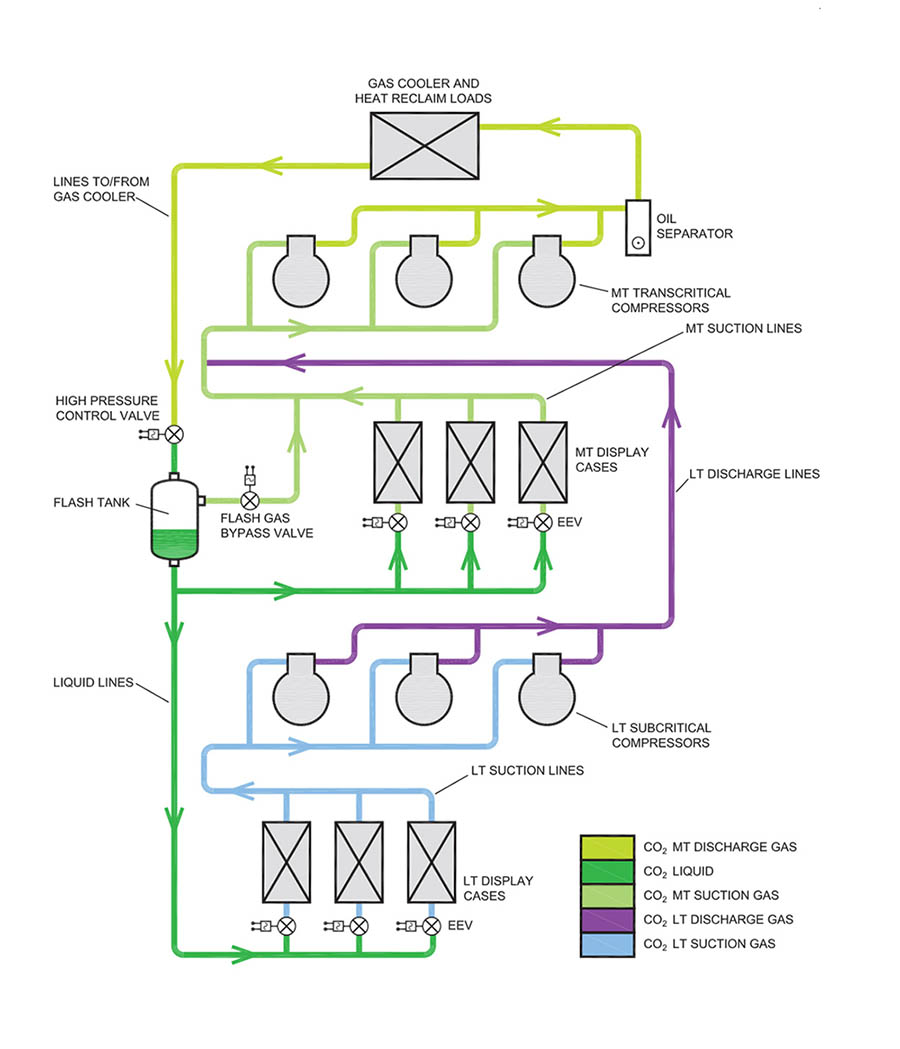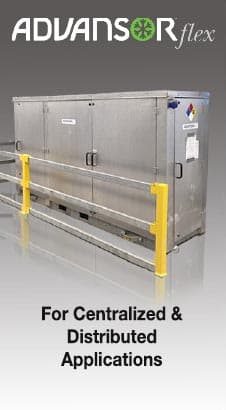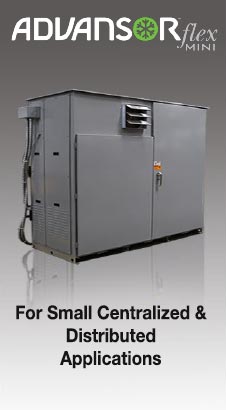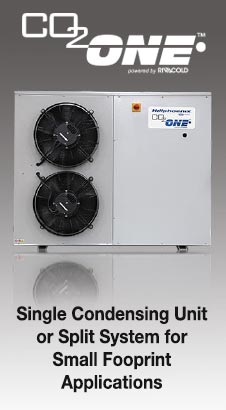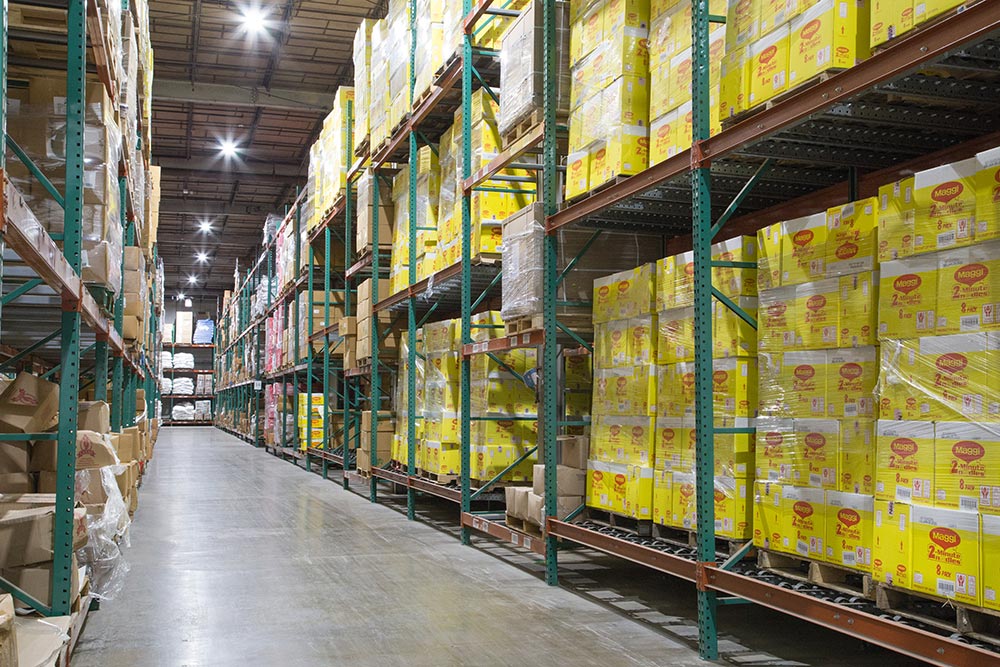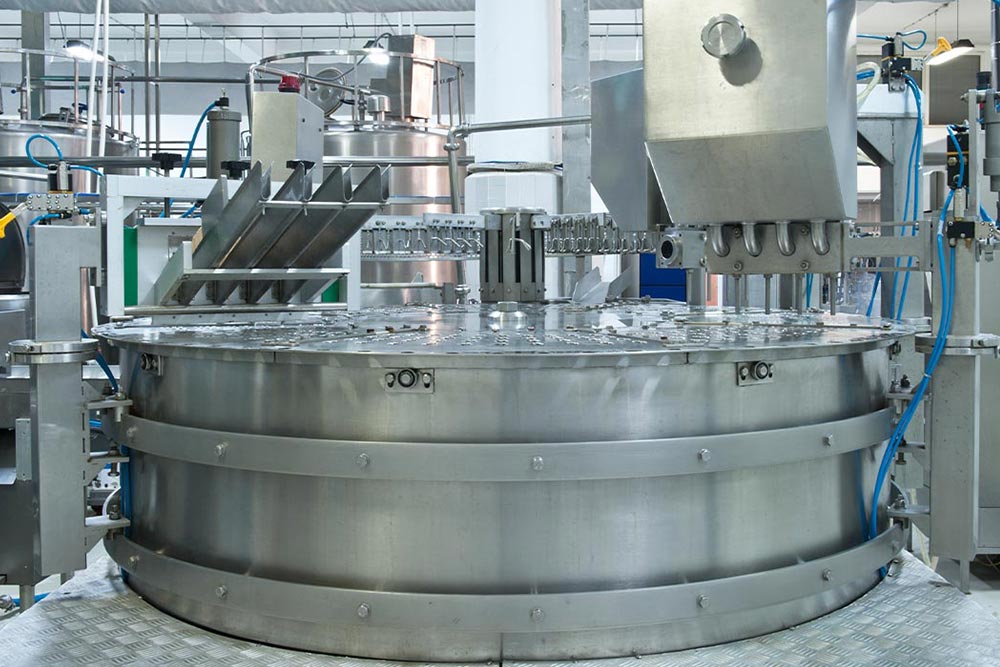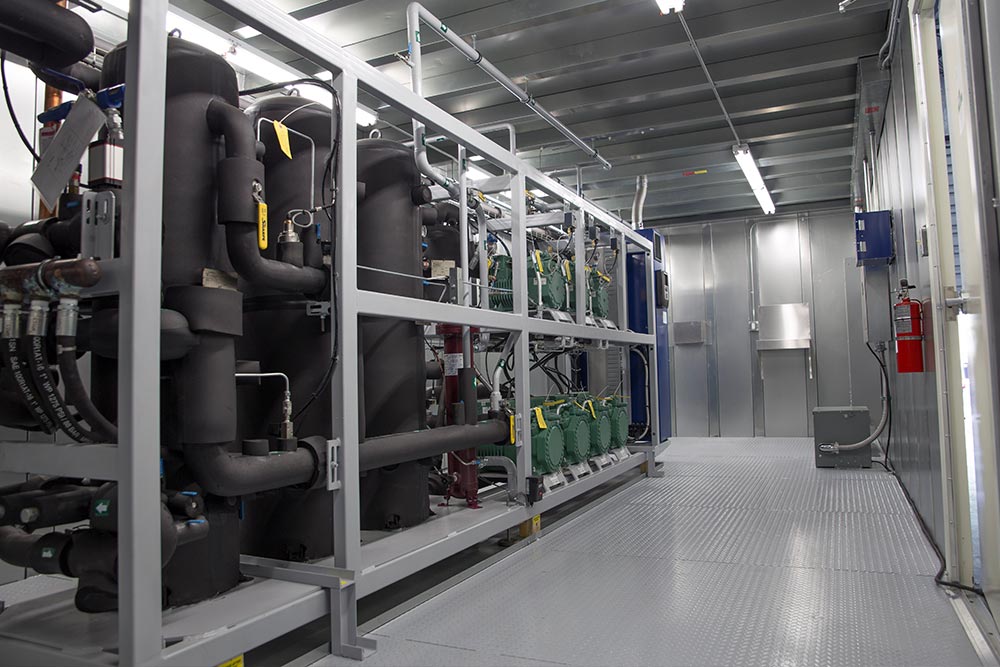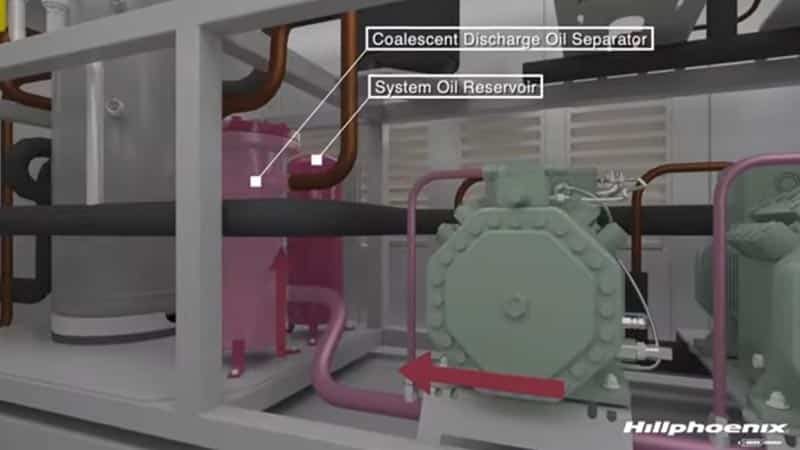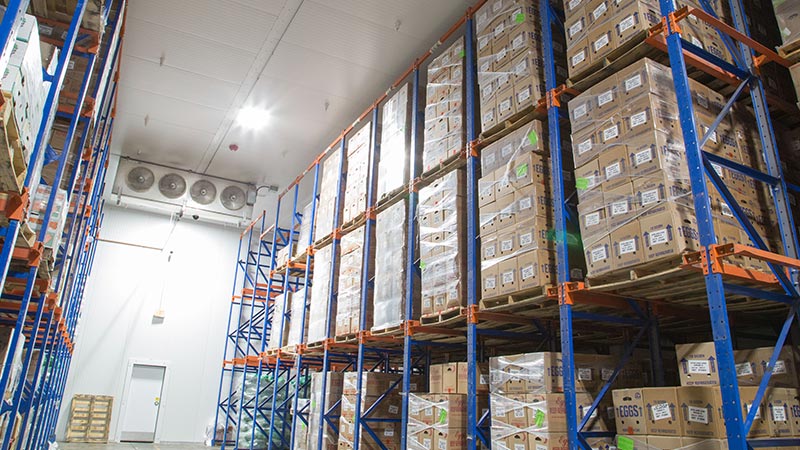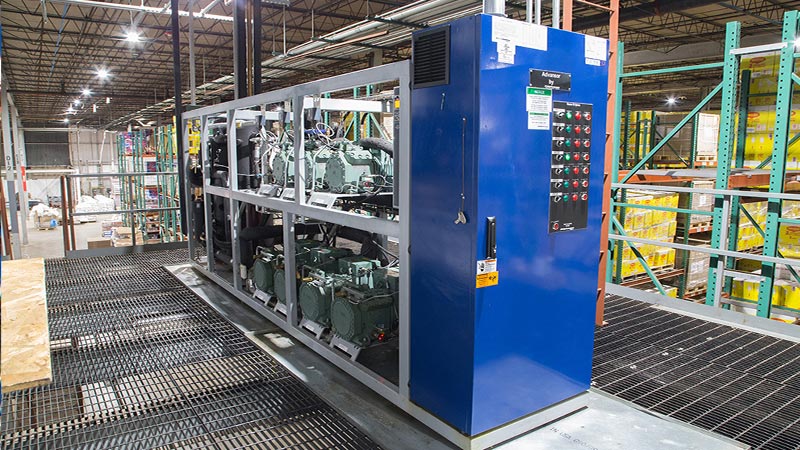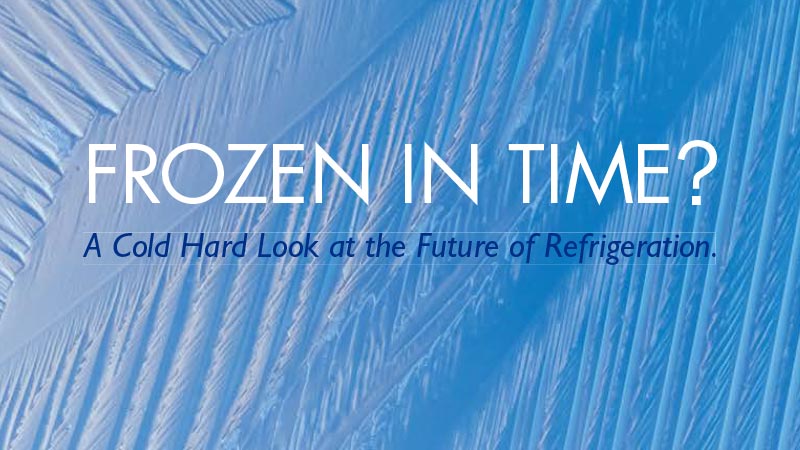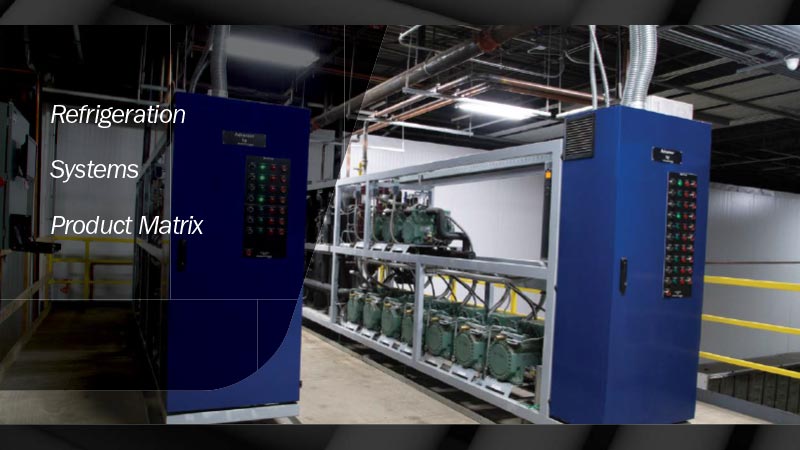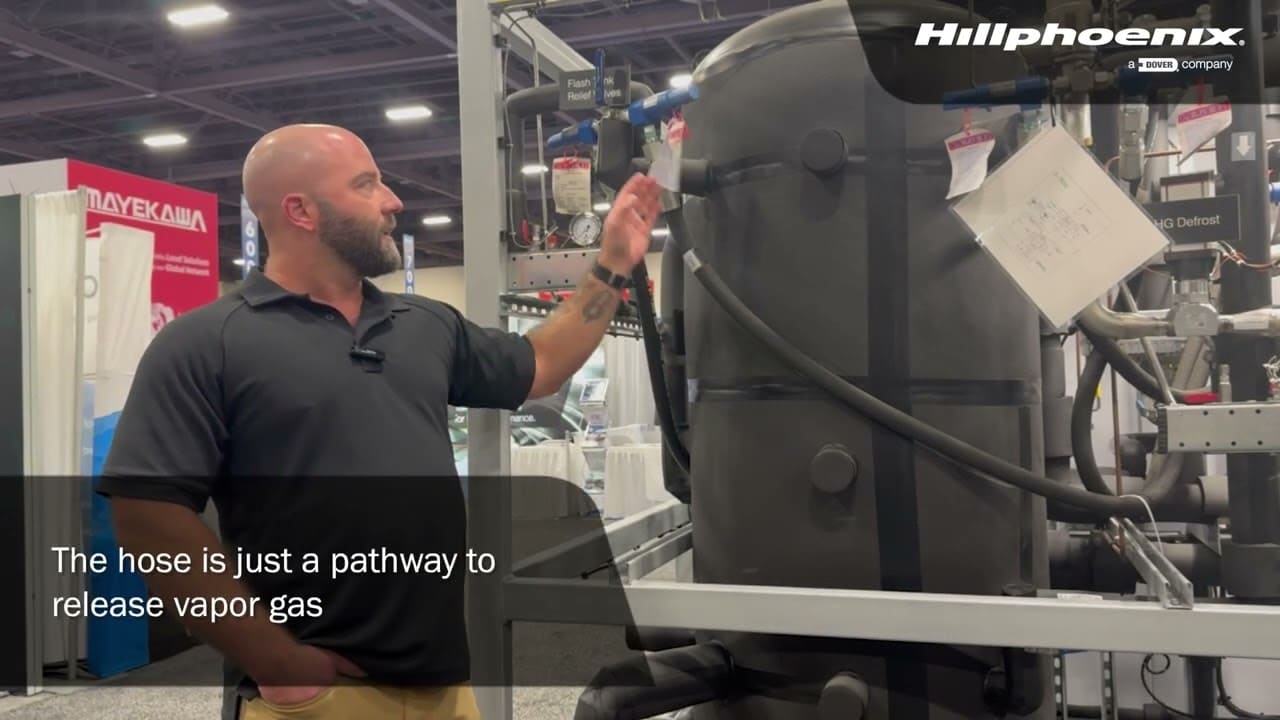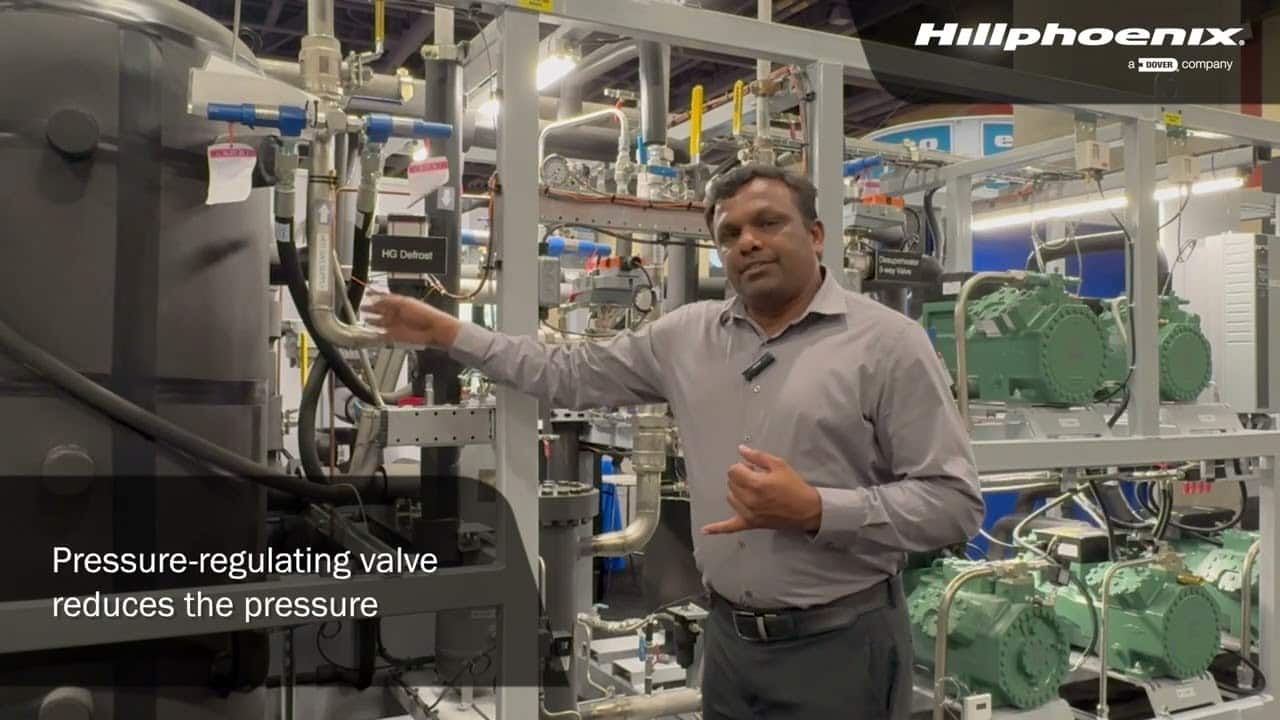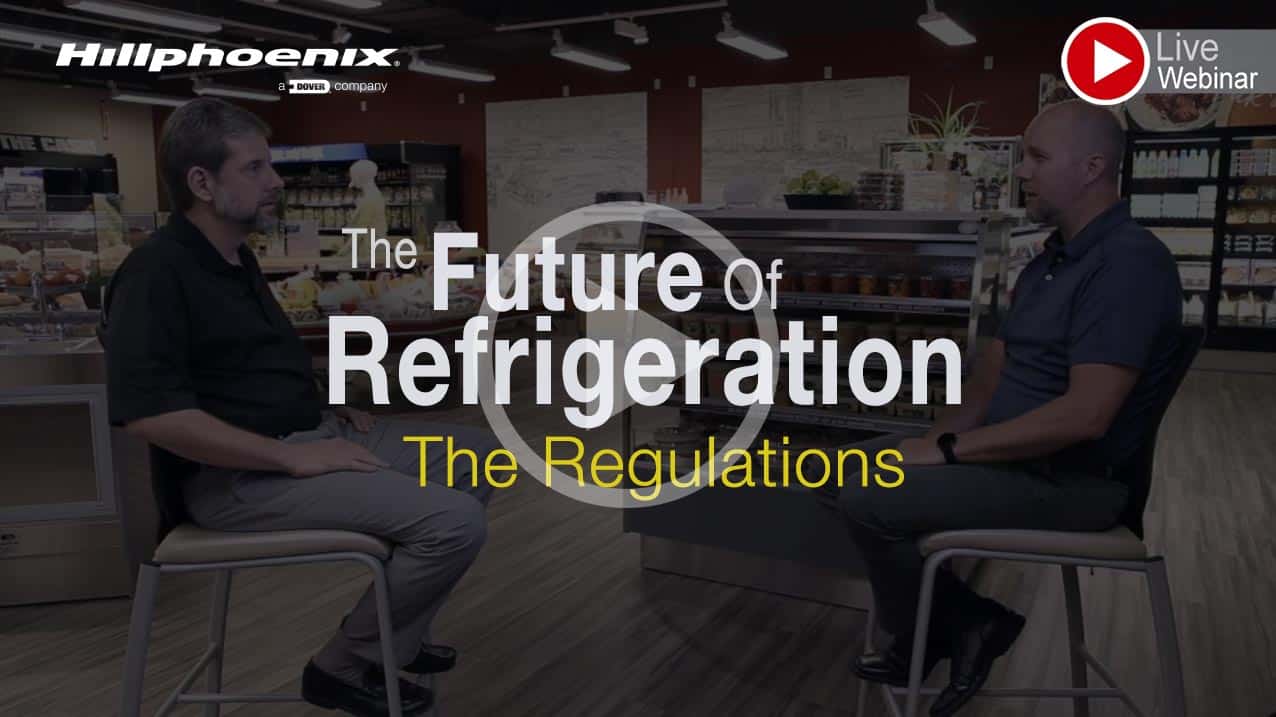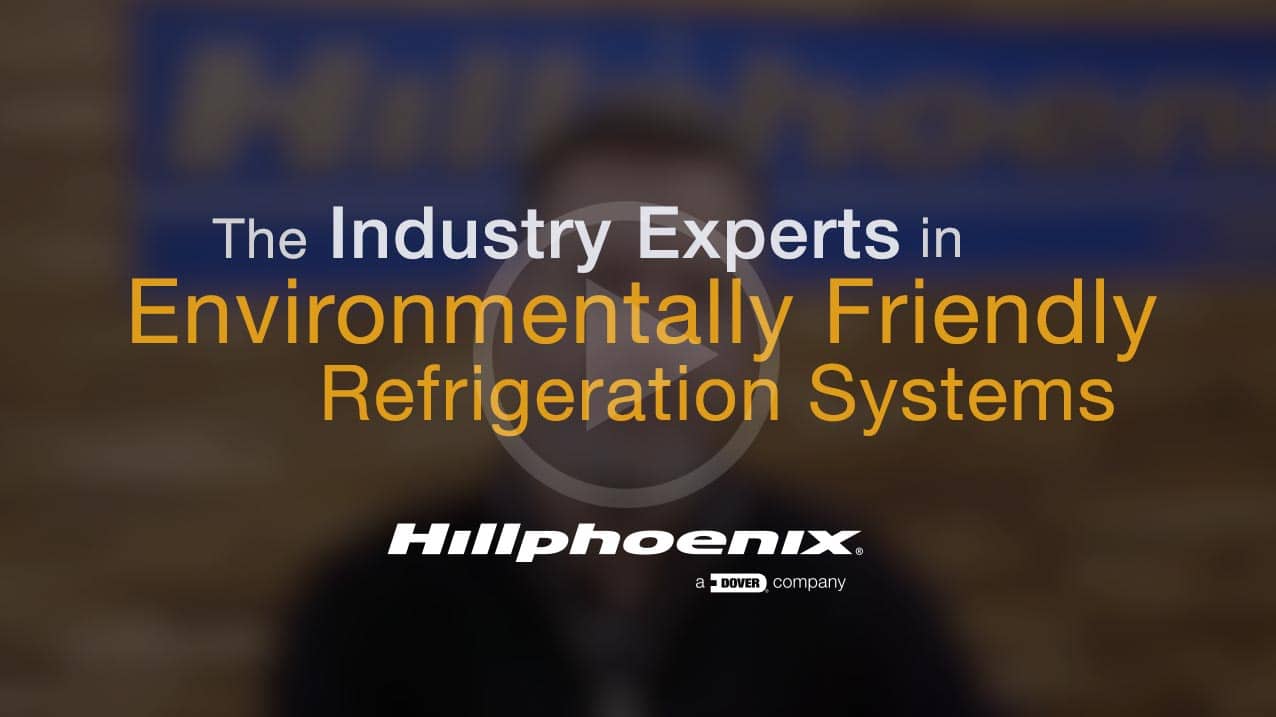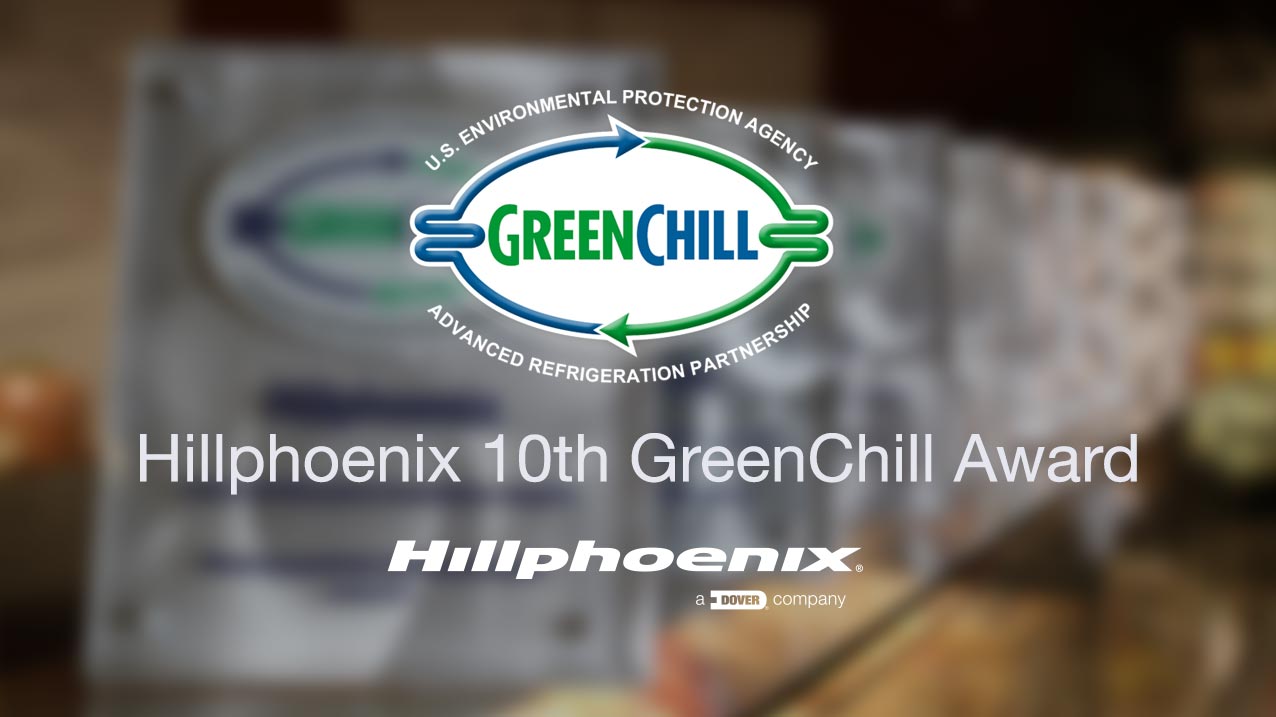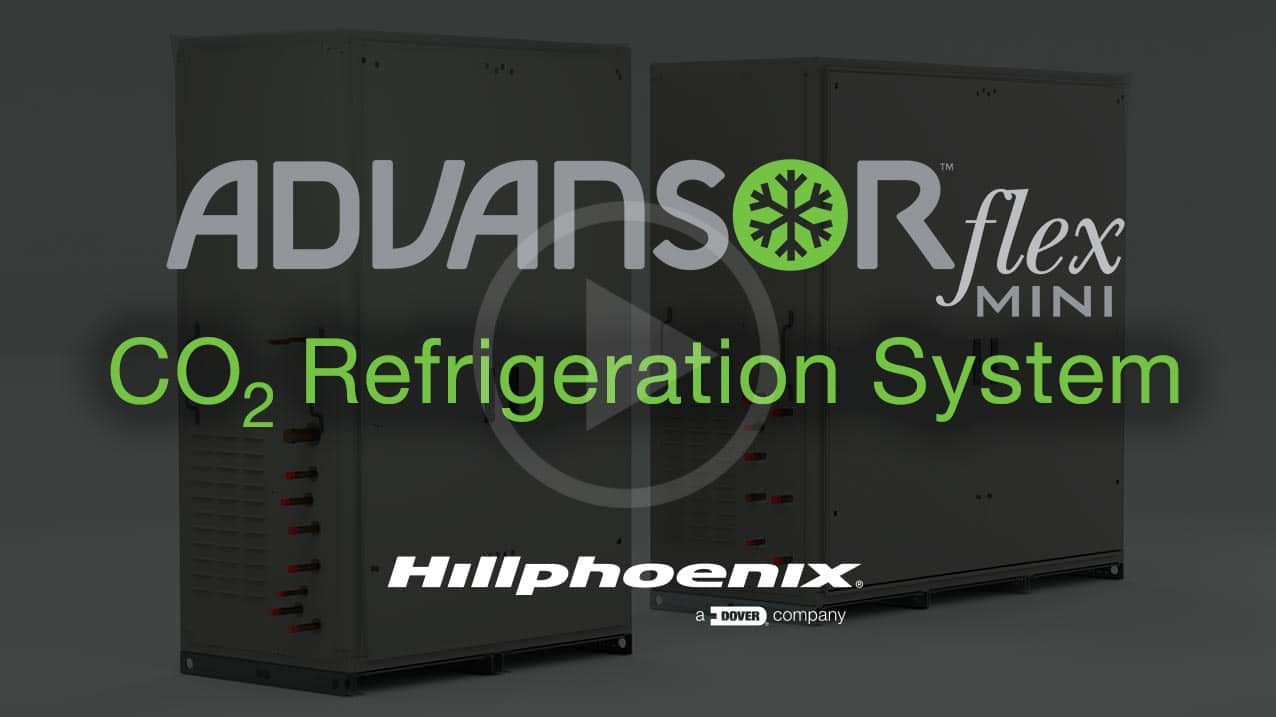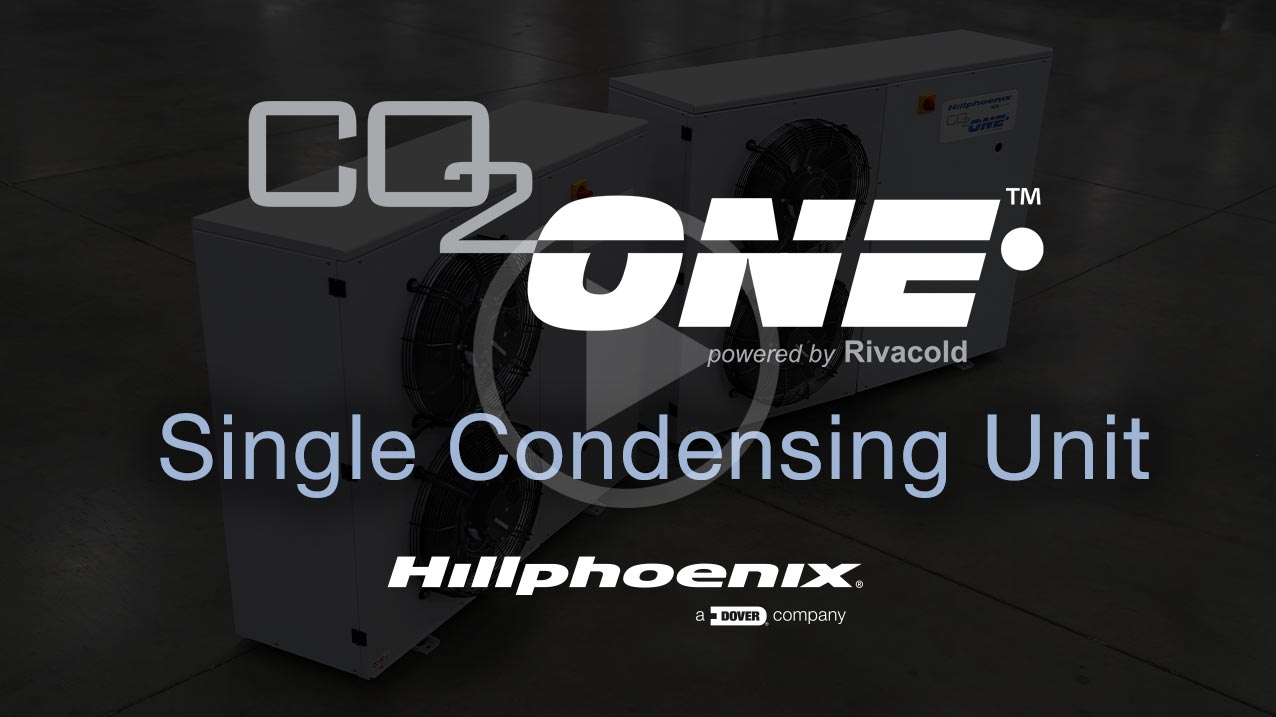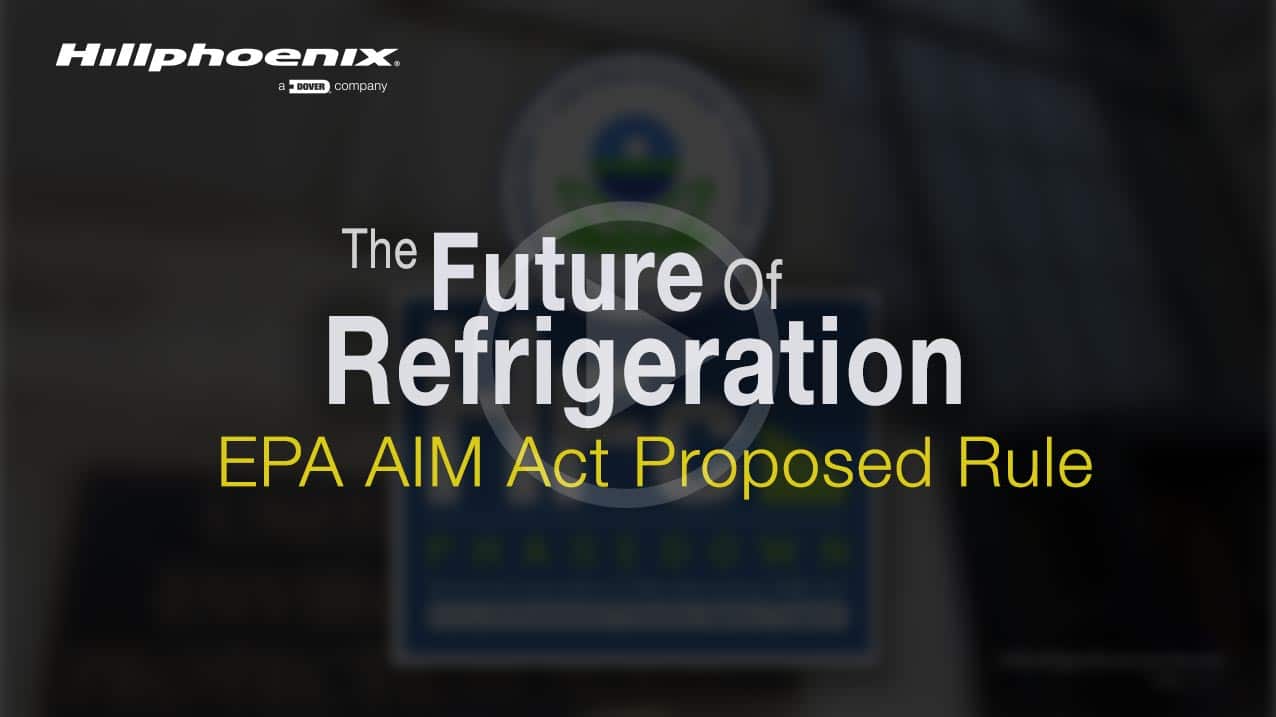
CO2 Refrigeration for Retail and Industrial Applications
Hillphoenix provides industrial refrigeration and food retail refrigeration solutions for companies in multiple industry sectors, and we are the leader in CO2 refrigeration, eco-friendly low-charge synthetic systems, micro-distributed refrigeration systems, and alternative refrigerants such as propane.

CO2 refrigeration systems! A perfect solution for regulatory compliance.
Navigating and staying compliant with all of the new retail and commercial refrigeration regulations can seem daunting. Many of the hydrofluorocarbon (HFC) refrigerants used in commercial refrigeration produce environmentally harmful carbon emissions. As the industry looks for alternative refrigerants with lower global warming potential (GWP) and ozone depletion potential (ODP), questions arise concerning regulatory changes, refrigerant performance and safety. Hillphoenix suggests using CO2 refrigeration systems for regulatory compliance. Why use CO2 refrigerants?
CO2 Refrigeration:
Hillphoenix sustainable refrigeration systems
The leader in CO2 refrigeration and alternative refrigerants, Hillphoenix provides CO2 refrigeration systems for industrial and retail applications, specifically designed to meet the specific needs of your industry while saving energy, ensuring regulatory compliance, and reducing your environmental impact. Let’s cover some of the most common questions asked about CO2 refrigeration systems.
Why should you use Hillphoenix for CO2 refrigeration solutions?
Because we offer you hands-on, time-tested practical CO2 systems experience that no one else in our industry can match.
We have installed over 14,000 CO2 Booster systems globally. We have earned eleven consecutive EPA GreenChill Store Certification Excellence Awards. We have educated over 40,000 industry professionals and organizations on a host of refrigeration topics including natural refrigeration systems. And, in addition to being a founding member of the GreenChill program, Hillphoenix helped foster the founding of NASRC, a non-profit organization committed to reducing greenhouse gases and helping retailers transition to environmentally friendly refrigerants.
Hear From Food Retailers Who Use Our CO2 Refrigeration Products
From newcomers adopting CO2 for the first time to trailblazers who have used CO2 systems for years, our partners are praising Hillphoenix for our comprehensive engineering support and flexible, customizable full-store solutions.
We design our food retail and commercial refrigeration systems and merchandising display cases to maintain the highest standards in food quality and safety—plus, they are versatile and customizable enough to match any aesthetic. Watch the testimonial videos to hear what our customers have to say about our dependable, scalable, sustainable solutions!
Debunking the Myths About CO2 Refrigeration
There are common misconceptions out there about CO2 refrigeration systems. Refrigeration expert Scott Martin helps you learn fact from fiction in this webinar and educational webpage called “Debunking the Myths About CO2 Refrigeration.” Some common misconceptions include:
- CO2 is an energy hog
- CO2 is way too complex
- CO2 system leak rates are over 100%
For an informed look at CO2 refrigeration, watch the webinar or view the webpage as Martin (Hillphoenix Senior Director of Industry Relations and Compliance) debunks some of the industry’s biggest myths.
CO2 refrigeration systems for the food retail industry
Our food retail refrigeration systems and merchandising display cases are designed to maintain the highest standards in food quality and safety as well as providing retailers with the flexibility and customization options to create the best customer shopping and retail merchandising experiences. We lead the industry in CO2 retail refrigeration, R22 replacement systems and alternative refrigerants. Our wide range of retail commercial refrigeration and merchandising solutions utilize industry-leading energy efficient refrigeration and lighting technologies and are designed with our customers’ needs in mind.
We offer a CO2 Refrigeration System for every application.
CO2 refrigeration systems for industrial applications.
The leader in CO2 refrigeration and alternative refrigerants, Hillphoenix provides custom industrial refrigeration systems to meet critical process requirements for production, processing, packaging, freezing, and storage applications in the Cold Storage & Distribution, Food Processing & Production, Pharmaceuticals, and Ice Rink sectors. Industrial refrigeration systems designed and produced by Hillphoenix ensure the integrity of the cold supply chain with innovative traditional and sustainable refrigeration solutions.
Literature
Angelic Bakehouse needed to increase capacity and capability.
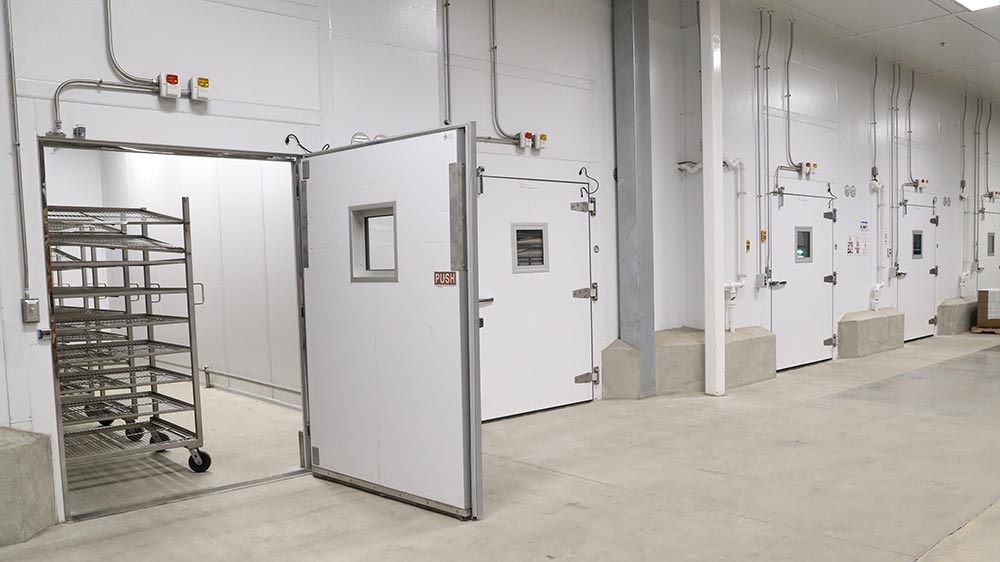
To get to the next level for their business, they determined they needed to install a blast freezer and accompanying refrigerated processing areas. Angelic Bakehouse was to have five blast freezers, a refrigerated packaging area, a refrigerated dock area, and a main storage freezer. A CO2 system was the answer
DeCO2ded – Understanding ROI on CO2 Refrigeration Systems
Determining ROI on a CO2 system requires a number of variables. By analyzing those variables including the cost/benefit analysis, a retailer can gain a better understanding what they are.
CO2 Transcritical Booster Systems Explained
This white paper explaines in general how CO2 booster systems work, and in particular, the function of three main components of the system that make it a practical alternative to traditional refrigeration systems.
A CO2 solution to ensure sustainability and corporate citizenship.
Best Foods to expand their capabilities to meet ever-growing customer demand. To further their business’s growth, they needed, an additional 25,000 sq. ft freezer, a 20,000 sq. ft cooler, a 15,000 sq. ft refrigerated dock, and a sizeable dry storage area.e.
House of Spice recently decided to build a Chicago-area facility to help keep pace with their rapidly expanding business.
A growing awareness of the environmental consequences of using global warming synthetic refrigerants inspired House of Spice to seek alternative refrigeration solution such as CO2.
Frozen In Time. A Hard Look at the Future of Refrigeration
A Cold Hard Look at the Refrigeration Regulations. Do nothing in the face of certain change to come later. Or, make a choice from two options: update/retrofit existing equipment or build new.
Hillphoenix Refrigeration Systems Product Matrix
No matter what the application or the specific refrigeration need, we can offer our customers a wide variety of options and configurations.
Video & Interactive
Hillphoenix CO2 (R744) Refrigeration Systems Product Portfolio Webinar
Why use CO2 (R744) as a refrigerant? It is an ASHRAE classified A1 refrigerant – It’s all-natural, non-toxic, non-flammable refrigerant with a global warming potential (GWP) of 1. CO2 is also a very efficient refrigerant that can provide costs savings. CO2 is a future focused solution for regulatory compliance and protects against future legislation and the impact of possible taxation or costly fines.
Hillphoenix Industrial Tech Tip: Why Does the Relief Hose Have a Lower Pressure Rating?
Relief valves for industrial CO2 systems require a high pressure rating—but the hoses don’t. Why is that? Inside Sales Engineer Todd Malcolm explains the different pressure ratings and why they matter.
Hillphoenix Industrial Tech Tip: How Does Our Hot Gas Defrost System Work?
Hillphoenix Systems Technical Program Manager Senthil Shanmugam explains how medium-temp discharge hot gas defrost systems work and why they are effective for Hillphoenix industrial CO2 systems.
Hillphoenix Industrial Tech Tip: Why Use PTFE On Threaded Joints?
To prevent leaks, Hillphoenix uses a two-step process to seal all threaded joints for field piping. Frank Simao, our Corporate Trainer, explains both steps, including the proper way to apply PTFE tape.
Refrigeration Regulations and Natural Refrigerants Webinar
Refrigeration regulations webinar discussion about refrigeration regulations, compliance and natural refrigerants.
The Industry Experts in Environmentally Friendly Refrigeration Systemr
We offer you hands-on, time-tested, practical experience with natural refrigerants, that no one else in our industry can match.
Hillphoenix 2020-2021 10th GreenChill Award
Each year, the EPA’s GreenChill program recognizes various food retailers and refrigeration systems manufactures……that have taken steps to reduce refrigerant emissions and decrease their impact on climate change.
AdvansorFlex-Mini CO2 System
The Advansorflex-Mini CO2 refrigeration system is perfect for small format retail stores, partial remodels, and stores with distributed refrigeration systems. A GWP of 1 and ODP of 0 make this system a future-focused solution for refrigeration regulations.
CO2One Single Condensing Unit
CO2One is a CO2 single condensing unit all natural refrigeration system that comes in a small, convenient footprint ideal for small capacity loads in any size store.
EPA AIM Act Proposed Rule
In a continuing effort to keep the food retail industry and our customers informed of the ever-changing refrigeration regulatory environment, we want to bring you the most recent update concerning a proposal from the US Environmental Protection Agency or EPA.
CO2 Refrigeration:
the time has come to stop wondering and make a decision!





